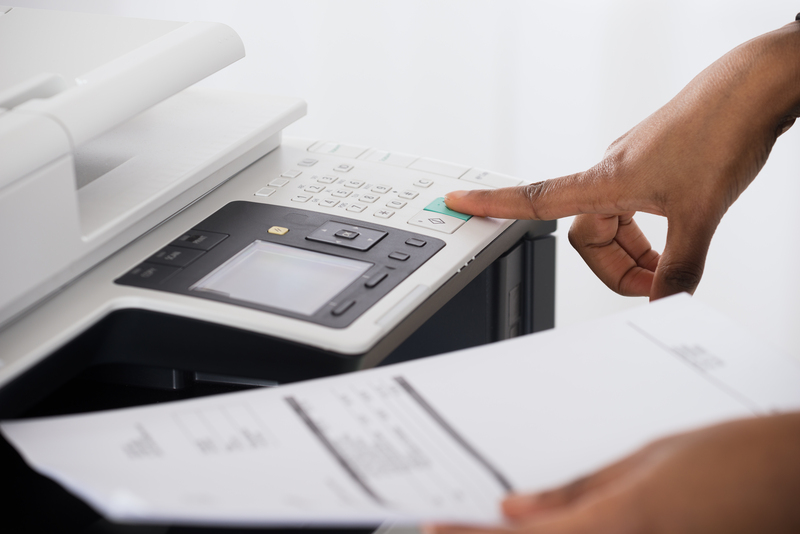Introduction: The Growing Challenge of PPE Waste in Schools and Offices
In light of recent global health events, the use of Personal Protective Equipment (PPE) has become an integral part of daily life in educational and professional environments. However, the surge in disposable masks, gloves, face shields, and sanitizing wipes has escalated a new environmental issue--effective management of PPE waste in schools and offices. Handling this type of waste responsibly is essential for health, safety, and environmental conservation. This comprehensive article will explain how schools and offices should handle PPE waste and provide actionable strategies for compliance and sustainability.

Understanding PPE Waste: What Is It and Why Does It Matter?
PPE waste consists of used masks, gloves, gowns, face shields, and other items designed to protect against infectious agents. Most of these items are made from synthetic polymers that are not easily biodegradable. When improperly disposed of, PPE waste can:
- Contaminate land and water sources
- Increase health risks to custodial staff and waste handlers
- Add to the mounting problem of plastic pollution
- Potentially spread pathogens if handled incorrectly
Schools and offices generate a significant percentage of community PPE waste due to large gatherings and continuous operations. Therefore, understanding and implementing best practices in PPE disposal is no longer just a recommendation--it is a necessity.
The Importance of Safe PPE Waste Disposal in Schools and Offices
Protecting Public Health
Proper disposal of PPE in schools and offices is pivotal for safeguarding the health of students, teachers, staff, and other occupants. Incorrectly handled waste can expose individuals to pathogens and infectious materials, increasing the risk of outbreaks and public health emergencies.
Environmental Impact
Disposable PPE can persist in the environment for hundreds of years. Poorly managed PPE waste can clog waterways, harm wildlife, and contribute to the widespread issue of microplastics. Reducing the environmental footprint of workplaces and educational institutions is only possible with responsible waste management strategies.
Legal and Regulatory Compliance
Most regions now have regulations governing medical and hazardous waste, including rules for PPE waste disposal in commercial and institutional settings. Schools and offices are obligated to adhere to these guidelines to avoid fines and legal complications.
Steps to Properly Handle PPE Waste in Schools and Offices
1. Establish Clear PPE Disposal Protocols
Schools and offices must develop and communicate standardized procedures for collecting, storing, and disposing of PPE waste. Consider the following essential steps:
- Designated Disposal Areas: Install clearly marked PPE waste bins in visible, accessible locations such as entrances, classrooms, offices, corridors, and restroom exits.
- Signage: Use visual cues and instructions, including infographics, posters, and stickers, to help users easily identify where and how to dispose of PPE items.
- Regular Collection: Assign staff to monitor and empty PPE bins regularly to prevent overfilling and spillage.
2. Use Appropriate PPE Waste Containers
Not all waste bins are equipped to handle potentially contaminated PPE waste. The recommended features of effective PPE waste containers include:
- Tight-fitting lids to contain odors and prevent cross-contamination
- Durable leak-proof materials resistant to punctures and tears
- Clearly labeled as "PPE Waste" or "Hazardous Waste"
- Distinct colors (such as red or yellow) to differentiate from regular waste
Employing the right containers ensures that PPE waste does not get mixed with recyclable or general trash, which is vital for safety and compliance.
3. Train Staff and Students/Employees
Consistent training on the handling of PPE waste is critical. All individuals within the institution--whether students, teachers, office employees, or janitorial staff--should be trained to:
- Remove PPE safely to minimize contact
- Properly dispose of PPE in dedicated containers
- Understand the risks of mishandling PPE waste
- Use hand sanitizer after handling used PPE or PPE bins
Regular training refreshers and updates following changes in health directives keep everyone informed and compliant.
4. Safe Storage and On-Site Handling
While awaiting collection, PPE waste should be safely stored to reduce the risk of leakage, accidental contact, or unauthorized access. This could include:
- Storing bags in locked, ventilated waste rooms
- Minimizing handling to a small, trained team
- Using gloves and masks when moving or consolidating bags
- Disinfecting surfaces that come in contact with PPE waste bags
5. Collaborate with Certified Waste Disposal Services
Contract with waste management companies licensed in handling hazardous or infectious waste. Confirm they have:
- Up-to-date certifications and waste transport permits
- Documented procedures for safe PPE waste pickup and disposal
- Transparent supply chain records for audit and accountability
This partnership ensures compliance with local, state, and federal regulations for PPE waste disposal in schools and offices.
6. Encourage Sustainable PPE Practices
Reducing PPE waste at the source is as important as its proper disposal. Consider these sustainable alternatives:
- Use of reusable, washable face masks (where appropriate)
- Instructing staff and students/employees to minimize single-use items
- Providing hand sanitizers to reduce glove dependency
- Participating in recycling programs for certain PPE items (if available and safe)
Unique Considerations for Schools and Educational Institutions
Child-Safe PPE Protocols
Younger children may not have the same understanding of hygiene practices as adults. Schools must therefore:
- Utilize child-friendly signage with illustrations and simple language
- Integrate PPE waste disposal education into the curriculum
- Supervise younger students during disposal routines
- Use bins with child-safe lids that are easy to operate
Staff Training and Parental Communication
Staff should receive targeted guidance on supporting children with compliant PPE disposal. In addition, schools should:
- Send informational materials home to parents explaining the institution's PPE waste management systems
- Encourage families to discuss and reinforce responsible practices at home
Dealing with Large Volumes during Outbreaks
During viral outbreaks, usage and disposal rates for PPE can skyrocket. Schools must have contingency plans for increased waste volumes, such as:
- Arranging for more frequent waste pickups with service providers
- Expanding the number and size of PPE waste bins
- Implementing temporary storage solutions if necessary
Specific Challenges and Solutions for Office Environments
Employee Engagement and Responsibility
Offices often involve a diverse mix of staff whose compliance is critical to success. To enhance employee participation in responsible PPE disposal:
- Include PPE waste management in onboarding sessions and employee handbooks
- Appoint waste champions or green teams to monitor practices and provide feedback
- Promote awareness through posters, emails, and periodic reminders
Establishing Remote PPE Drop-Off Points
In multi-story or open-plan offices, employees may find dedicated PPE bins too far from their desks. To make proper disposal easier:
- Position smaller collection points at key intervals and high-traffic locations
- Regularly monitor remote drop-off locations to avoid overflow
This approach minimizes improper disposal and encourages consistency.
Addressing Cross-Contamination Risks
In shared office areas such as kitchens and meeting rooms, make sure PPE waste is not discarded with food or recyclables. Use physical barriers or distinct bin designs to prevent accidental mixing.
The Role of Technology and Innovation in PPE Waste Management
Smart Bins and Monitoring Systems
Advances in waste management technology now enable use of smart bins equipped with sensors to detect fill levels. Some even feature automatic lids, reducing touchpoints and making safe PPE disposal more convenient. Alerts can be sent to custodial teams when bins need to be emptied, ensuring effective management.
PPE Waste Tracking and Reporting
For compliance and sustainability reporting, digital tracking systems can log the volume and frequency of PPE waste pickups. Such data can help schools and offices analyze trends and identify opportunities for waste reduction.
Pilot Programs for PPE Recycling
While disposable PPE is mostly non-recyclable through traditional systems, some organizations and municipalities are piloting specialized recycling programs. These involve:
- Collecting single-use masks and gloves in sealed bags
- Transporting waste to licensed facilities that use thermal or chemical recycling methods
- Researching new biodegradable PPE products to reduce long-term impact
Engaging with innovative companies can position schools and businesses as sustainability leaders.

Frequently Asked Questions about PPE Waste in Educational and Workplace Settings
-
Can disposable PPE be thrown in the general waste?
No. Throwing potentially contaminated PPE into regular trash risks spreading infection and is often against regulations. Always use designated PPE waste bins. -
Is it possible to recycle PPE waste in offices and schools?
Most PPE is designed for single use and is not recyclable in standard facilities. Specialized recycling plans are an exception and must be verified for safety and compliance before use. -
What should be done if a PPE waste bin overflows?
Report it immediately to maintenance or custodial staff, avoid adding PPE, and consider putting up a temporary sign redirecting users to another bin. -
How should reusable PPE be handled?
Reusable PPE (like cloth masks or goggles) should be stored in personal containers and laundered/disinfected according to official guidelines. Reusable items should not be deposited with single-use PPE waste.
Conclusion: Building a Culture of Responsibility for PPE Waste Management
In today's world, where health and sustainability have taken center stage, the responsible disposal of PPE waste in schools and offices has become a core aspect of organizational duty. By developing thorough protocols, educating building occupants, employing the right infrastructure, and leveraging innovations, institutions can transform PPE waste management from a challenge into a showcase of environmental and social responsibility.
How schools and offices handle PPE waste not only affects the safety of those within their walls but also impacts the broader community and environment. Let's promote awareness, compliance, and continuous improvement for a future where safety and sustainability work hand-in-hand.
